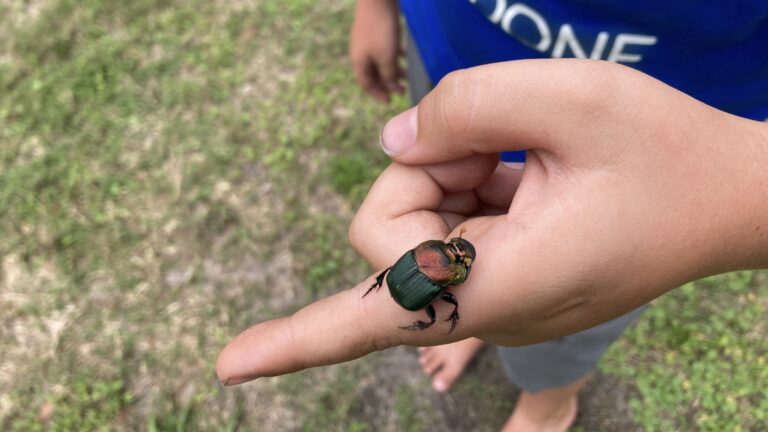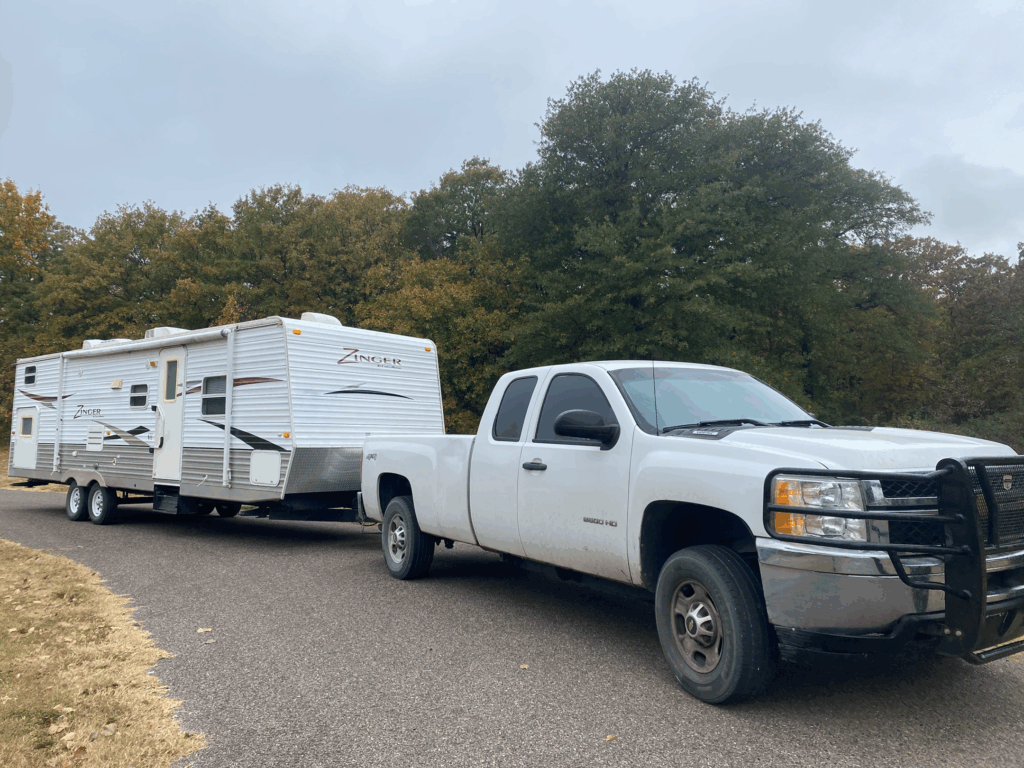
Summer is here, and that means the bugs are out. This is something we’ve battled every year since we moved into our RV, and this year is no different. It feels like every single time we open the RV door, the bugs are already there, waiting to get in. We’ve had everything from ants to fruit flies invade our home, and the time our friends had stink bugs in their RV was an absolute nightmare.
The good news? We have found several ways to keep the little invaders at bay so our RV stays relatively bug-free, despite the swarms of creepy crawlies we find outside. Use the tips below to keep bugs out of your RV as well.
Seal Entry Points
The first thing we do at the beginning of each bug season? Seal any and all entry points. After all, we aren’t likely to have a bug invasion if the little critters can’t easily get in.
Make sure to inspect for gaps around windows, doors, slide-outs, vents, plumbing, and the undercarriage. Use weatherstripping or caulk to seal cracks and crevices, and install mesh screens over exterior vents (fridge, furnace, water heater) using bug screen kits. We also like to check our door seals regularly and replace worn gaskets or add foam tape to improve the seal.
Keep the RV Clean
Sometimes super small bugs can sneak in even when we think we’ve sealed everything off as well as it can be. We’ve found that keeping the RV as clean as possible and making sure to remove all access to food helps ensure we don’t attract those tiny bugs, especially the ants.
We always wipe down counters after each meal and do our best to sweep daily. I’ve also found it helps to store food like cereal, crackers, cookies, and chips in airtight plastic or glass containers. Lastly, we empty our trash multiple times a day to remove food waste from our home.
We don’t have pets, but if you do, make sure to clean pet food bowls and don’t leave them out overnight, as some bugs like pet food.
Control Lighting
Bugs are attracted to food, yes, but some are also attracted to light. Because of this, we have discovered that it’s super important to pay attention to how you’re lighting your RV. This may sound a bit strange, but it really does make a difference.
One thing you can do is use yellow “bug lights” for exterior lighting. These attract fewer insects while still providing a bit of lighting for hanging out outside at night. We also make a point of turning off outside lights (including those yellow bug lights) when not needed, especially near doors or windows.
Closing blinds or curtains at night can help by keeping the light inside, so that the light from the windows doesn’t attract bugs to your rig.
Use Natural Deterrents
I’m not a big fan of using a bunch of chemicals in my home-on-wheels if I don’t have to. Sure, I’ll use the strong stuff if we’re dealing with a full-on infestation, but when it comes to just keeping bugs at bay, I much prefer to turn to natural deterrents—and honestly, they work pretty well.
Cedar blocks, peppermint oil, and bay leaves can deter spiders, ants, and roaches. Simply leave them out in places where these critters might like to hang out. Meanwhile, vinegar spray (white vinegar and water) can deter ants while cleaning surfaces at the same time. I like to use this around windows and in places where ants might try to sneak in.
In campgrounds where bugs are especially bad, I’ll sprinkle diatomaceous earth (food-grade) around tires, jacks, and under sinks.
Deploy Traps & Barriers
Sometimes, when we have a pest problem that won’t go away or when I suspect bugs may become an issue, I will turn to traps and barriers. Ant baits and roach traps placed in hidden corners and under cabinets can help prevent infestations and will help get rid of issues that already exist. Sticky traps also help by catching wandering bugs.
I’ve also found that wheel and jack pads submerged in water or treated with insecticide can stop ants from climbing up.
Protect the Entryway
Some bugs (especially the flying types) like to sneak into doors as they open. For this reason, it is important to open and close the door as little and as quickly as possible. It also helps to repair any holes in the screen door and ensure your screen door shuts tight so critters can’t sneak into cracks.
For extra measure, you may want to add door sweeps to keep crawling bugs out. We’ve also seen many RVers use magnetic screen curtains so they can leave the door open for airflow but still have plenty of protection from wandering bugs.
Manage Moisture
Did you know moisture can attract some kinds of bugs? For this reason, and to protect your rig from expensive water damage, it is imperative that you fix leaks immediately.
If you’re in a humid climate or camping in cold weather, use a dehumidifier to remove moisture from the air and prevent condensation. It’s also a good idea to dry out sinks and showers after use so you don’t leave standing water that might attract unwanted guests.

Watch Where You Park
One of the best things about RVs is that you can park them wherever you want. This means you can actually choose a campsite based on how bad the bugs might be. If you travel the entire country, you can often try to head to regions with fewer bugs. That said, this isn’t always possible. In these cases, just do what you can to find the campsites that are least likely to house bugs.
For instance, you will want to avoid camping near standing water, tall grass, or piles of wood, as these are all bug havens and those critters are likely to find their way into your home-on-wheels. You’ll also want to make sure to keep awnings and outdoor gear clean, as bugs can hitch a ride.
Regular Maintenance
Keeping bugs out of your RV is something you have to stay on top of all the time. This means you will want to inspect your RV exterior at least once a month, resealing any gaps in the seals or around windows and doors. Make sure you also look out for insect activity as you inspect!
Besides regular inspections, it’s also a good idea to spray insecticide barriers (like permethrin) around tires, jacks, and stabilizers every time you park in a new spot, or at least once a week. Replacing sticky traps, ant bait, diatomaceous earth, etc. on a regular basis is also key.
If You Have a Bug Problem
Sometimes, despite our best efforts, we still end up with a bug problem in our tiny home-on-wheels. If this happens to you, don’t panic. Stick with the tips above to try to keep the bugs at bay and then follow the steps below.
Identify
Identify the pest first. Make sure you know not just the type of bug, but the exact species if possible. This will help you determine what sort of bait, trap, and/or repellent to invest in. In the past, we’ve been able to get rid of all of our bug problems using simple store-bought baits and traps.
Up Your Game
If traps, baits, and deterrents don’t do the trick, consider using RV-safe foggers or sprays. Just make sure you ventilate well, as these can be unsafe for humans, especially in such a small space.
Hire a Pro
If all else fails, you may need to bring in a pro pest control service. Make sure you hire an RV-aware company or individual, as the way they tackle the problem may differ from the way they’d tackle such an issue in a sticks-and-bricks home.
Yes, bugs are annoying, but we’ll never be able to avoid them completely, especially when we head out to the most remote and wild of places. Fortunately, by using the methods above, we have been able to enjoy plenty of relatively bug-free adventures, and I am confident you will too!

